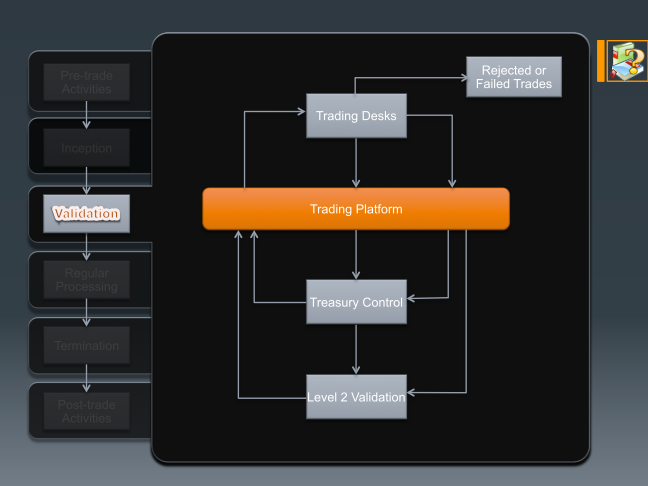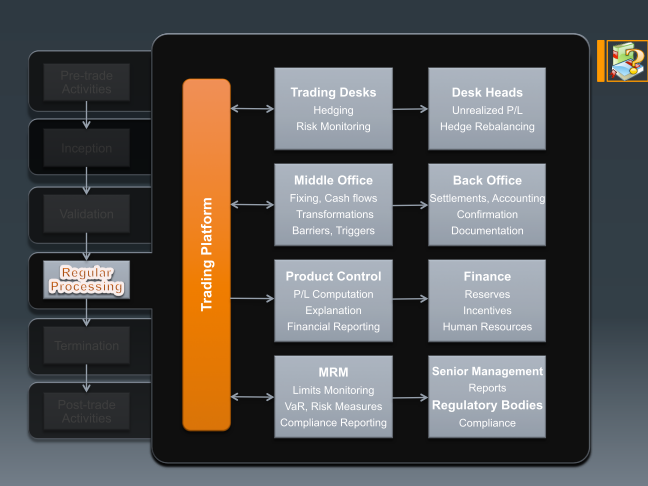Once a trade is booked into the trading platform database, it triggers a whole chorus of validation and daily processing. The validation process is a to-and-fro dance between the trading desks in Front Office and the control units in Middle Office, all mediated by the trading platform. The traders may insert a trade on an experimental basis. Once they are convinced that it is a viable trade, they push it to a confirmed state, which will be picked up by the treasury control unit. If the traders decide to discard the trade, the trade ends up in the trash pile (but never deleted permanently). The control unit typically works in a four-eye, double validation mode. They verify the trade inputs, and control limits such as the number of trades allowed for a particular product. If the trade passes their tests, they set its status to a validated state, which triggers a second level of checking. If the trade fails either level, they are pushed back into a state that allows the traders to either amend it or discard it.

Once the trade is fully validated, the processing part begins. It involves multiple teams and multiple perspectives, starting from how a trade should be identified to what the basic information unit that should be identified.

As shown in the figure above, regular processing takes place in various business units.
- Trading Desks monitor trades for hedging and rebalancing, monitoring profit and loss (P/L), and staying within the risk limits. The senior traders get distilled information from the junior ones through this regular processing and take appropriate actions.
- Middle Office plays a crucial role in regular process. They monitor target and barrier breaches, rate fixings and option exercises, cash flow generation, and spawning other cash trades. They generate (with the help of the trading platform) appropriate accounting triggers for Back Office to act on, in order to perform settlements, trade confirmation, documentation archival etc.
- Product Control is another business unit embedded within the middle office that actively monitor the P/L on a daily basis, with a view to explaining their movements based on the sensitivities and market movements, providing an independent computation of the profitability of the trading activity. Their computations of reserves feed into the finance and human resources departments and affect trader incentives and compensation.
- Market Risk Management also has hordes of staff employed to perform daily monitoring of trading limits (such as notionals, delta-equivalents etc.) as well as VaR computation, Stress VaR tests. In most banks, they also handle compliance reporting to regulatory authorities and provide concise and actionable intelligence to the upper management who decide the trading strategies.
As we shall soon see, the different and specific focus of each business unit demands a unique projection (which we will call a perspective) of the trading information from the trading platform. This requirement is one of the things that make its design and implementation so challenging.

